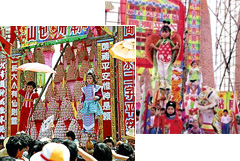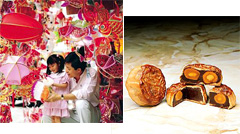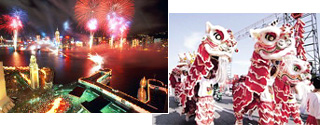 |
| |
| |
| - |
Low price guarantee |
| - |
100% Secure |
| - |
Rich content |
| - |
Frequent
updates | |
| |
Why our prices are
so low? |
| |
| Hong Kong Hotels has
partnered with a variety of travel suppliers
throughout Asia to be able to bring you the
LOWEST RATES AVAILABLE on the internet for your
hotel room. We have several people dedicated
only to researching the internet to check in on
the competition. If, somehow, a lower rate has
slipped through, we take it personally.
Here is our guarantee: If you have already
reserved a room through the Hong Kong Hotels and then can show that you could have
booked the same room in advance for a lower rate
through another internet source, please send us
the URL (for immediate verification) and WE WILL
BEAT THAT PRICE. It's as simple as that. Please
note that this guarantee is effective until the
time you give the final confirmation of your
reservations. Thank you for your interest in the
Hong Kong Hotels and our Lowest Rate
Guarantee. We're happy to be of service to
you. | | |
 |
|
|
Cheung
Chau Bun Festival (April/May)
There is only one bun festival
in all the world and it takes
place once a year on the tiny
island of Cheung Chau. Enormous
bamboo towers studded with sweet
buns and effigies of three gods
dominate the grounds near the
Pak Tai temple, where the main
festivities take place. The climax
of the eight day festival is a
large procession. Children dressed
in colourful and historic costumes
march, walk on stilts or ride
on floats through the island's
tiny winding streets. |
 |

| |
|
|
|
|
 |
Tin
Hau Festival (April/May)
Tin Hau, the Goddess of the Sea,
has a special place in Hong
Kong's heart, thanks to the
territory's maritime history.
For her birthday on the 23rd
day of the third month of the
lunar calendar, the fishermen
decorate their boats and gather
at her temples to pray for good
catches during the coming year.
There is always a big celebration
at Joss House Bay, with traditional
rites at the temple, and tour
organizers arrange launch trips
to view the celebrations. In
Yuen Long, in the New Territories,
a parade takes place with colourful
floats and lion dances. |

| |
|
|
| |
Mid-Autumn
Festival (August/September)
This Chinese equivalent to the
West's Harvest Moon Festival is
one of the loveliest nights of
the year. Part of the celebrations
commemorate a 14th-Century uprising
against the Mongols when rebels
wrote the call to revolt on pieces
of paper and embedded them in
cakes which they smuggled to compatriots.
|
|
|
Today, during the festival, people
eat special sweet cakes known
as "Moon Cakes" made of ground
lotus and sesame. Along with the
cakes, shops sell coloured Chinese
paper lanterns in the shapes of
animals, and more recently, in
the shapes of aeroplanes and space
ships. On this family occasion
parents allow children to stay
up late, and take them to high
vantage points such as The Peak
to light their lanterns and watch
the huge autumn moon rise before
eating their moon cakes. Public
parks are ablaze with many thousands
of lanterns in all colours and
sizes and shapes. |
 |

| |
|
|
|
|
 |
Chinese
New Year Parade
As part of Hong Kong's most vibrant
celebrations, the Chinese New
Year Parade is not to be missed.
A cacophony of colour and sound,
tradition burst forth and brings
in the new year. |

| |
|
|
| |
Dragon
Boat ("Tuen Ng") Festival
TDragon Boat ("Tuen Ng") Festival
is held on the fifth day of the
fifth lunar month. It is one of
Hong Kong's most exciting festivals,
featuring fierce dragon boats
racing in a lively, vibrant spectacle. |
|
|
The Festival commemorates the
death of a popular Chinese national
hero Qu Yuan, who drowned himself
in the Mi Lo River during the
third century B.C., in protest
against a corrupt government.
Legend says that as townspeople
attempted to rescue him, they
beat drums to scare fish away
and threw dumplings into the sea
to keep the fish from eating Qu
Yuan's body. |
 |
| |
Today, Festival activities recall
this legendary event. During the
Festival period, people eat rice-and-meat
Dumplings wrapped in bamboo leaves;
and many look forward to swimming
or even simply dipping their hands
in the water. To symbolise attempts
to rescue Qu Yuan, the real highlight
of the festival can be seen when
teams race elaborately decorated
dragon boats to the beat of heavy
drums. The special boats, which
measure more than 10 metres, have
ornately carved and painted "dragon"
heads and tails, and each boat
carries a crew of 20 - 22 paddlers.
Participants in the races train
in earnest for the competition.
Sitting two abreast, with a steersman
at the back and a drummer at the
front, the paddlers race to reach
the finishing line, urged on by
the pounding drums and the roar
of the crowds. |
| |
|
|